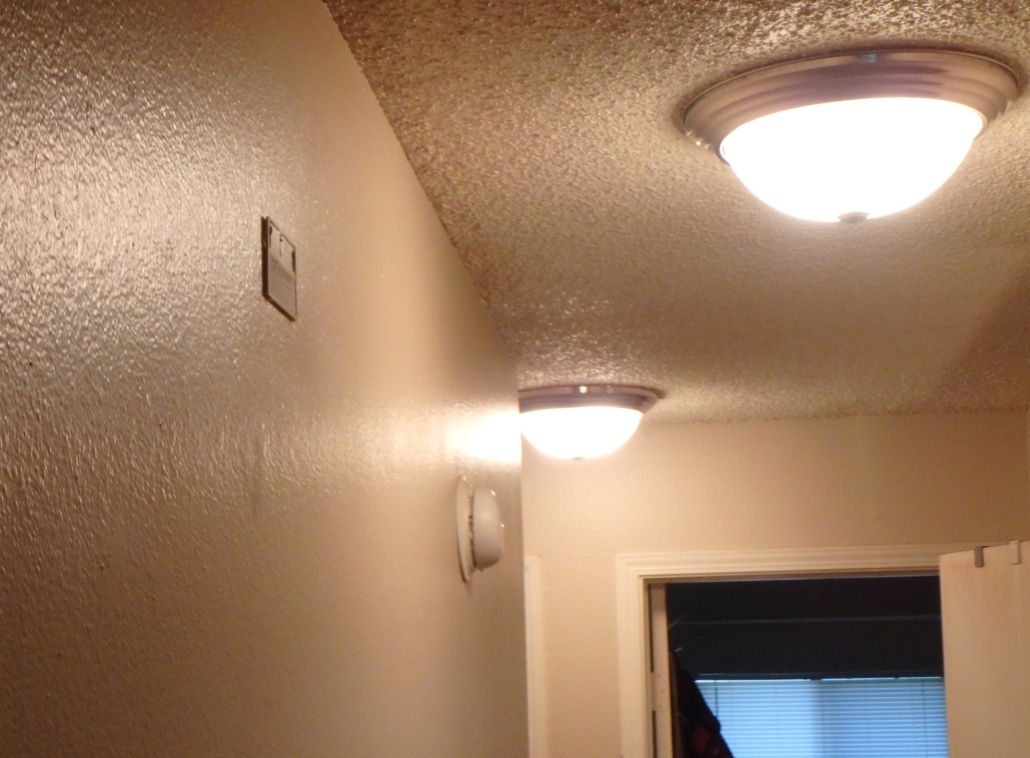FAQ:Do EMT’s get poisoned by Carbon Monoxide during Rescues?
Short Answer: Too often because they don’t always wear personal protector carbon monoxide alarms.
From our carbon monoxide video podcast between Brain Injury Law Group attorneys, Gordon Johnson and Griffith Winthrop:

Do EMT’s Get Poisoned by Carbon Monoxide? They do because they don’t always wear the proper warning devices. Unfortunately, this also means that those they are supposed to get rescued aren’t evacuated immediately, such as in this apartment, where the missing CO Alarm is shown by just the back plate hanging on the wall.
Gordon Johnson: How does it happen that EMT’s get poisoned?
Griff Winthrop: It is crazy, isn’t it? I mean, you would think these are the professionals that know they’re responding to something. And you see people stuporous or unconscious, and they did not figure it out. In the one case, they did not have carbon monoxide detectors.
The other problem, of course, is that this establishment did not have a carbon monoxide alarm, which is so frequent in our cases, a simple $25 carbon monoxide alarm would have saved everybody’s brains that day. And they didn’t have one in a very, very nice apartment complex in a nice fitness center. They did not have a carbon monoxide alarm anywhere in there.
The EMT’s were poisoned because they either didn’t have a portable CO “personal protective device” or they failed to turn it on. Failing to identify Carbon monoxide in this event not only nearly killed both rescued individuals but resulted in such poisoning to the EMT’s that they couldn’t finish driving the ambulance to the hospital. They too had to be rescued. From the ambulance report:
M25 was dispatched for a 26 year old male with shortness of breath while running on a treadmill. M25 found the patient with LOC and had dispatch add M24 to the incident. When the patient was being removed from the building the patients significant other began to experience issues. M25 had dispatch add B25, M10 and E23 to the incident and established command. M24 provided care to the second patient. M25’s crew were not feeling well but transported patient 1 to Providence Hospital.While en route to the hospital, M25 rendezvous with E6 for a driver due to the crew not feeling well. After the patient transfer to the ED staff, all three crew members were evaluated by the ED for CO exposure
This is not an isolated event. A good friend and one of the most ardent advocates for carbon monoxide safety is Kris Haushildt from the The Jenkins Foundation. She has made a very strong statement about all of the people who need to be wearing personal protector CO alarms:
It is not just EMT’s who should wear those devices, but employees at hotels and apartment complexes including:
- Hotel staff:
- Maintenance staff,
- Housekeepers,
- Front desk staff, managers, owners;
- Hotel brand inspectors (routine);
- Health Dept inspectors (routine);
- Fire Dept inspectors (routine);
- Elevator service/repair workers;
- City/County code officials;
- Private HVAC and plumbing contractors:
- Gas utility workers
Set aside the clear value of protecting responders from carbon monoxide. Regardless of how much risk a responder is willing to take, a personal protective device will also solve the riddle of why the person or situation the EMT’s are attending to is CO and not some other disease process.
For example, an 11 year old girl who was evacuated after fainting and having a seizure. EMT’s evacuated the little girl but not the other family members. Three hours later the family got a call from the hospital telling them to call 911. But instead of being told to evacuate because the original patient had high CO levels, they were told to open windows and doors. Not get out, IMMEDIATELY. As they followed instructions and open the windows and doors while they waited inside, the documented ambient CO levels were 80 ppm, not the more likely 300-400. Meanwhile for three additional hours, the rest of the family was exposed to those high levels of CO.
If the EMT’s had been wearing CO alarms, everyone could have been evacuated immediately. The exposure to CO to that family, including a five year old girl, would have ended in minutes, not hours.

Leave a Reply
Want to join the discussion?Feel free to contribute!